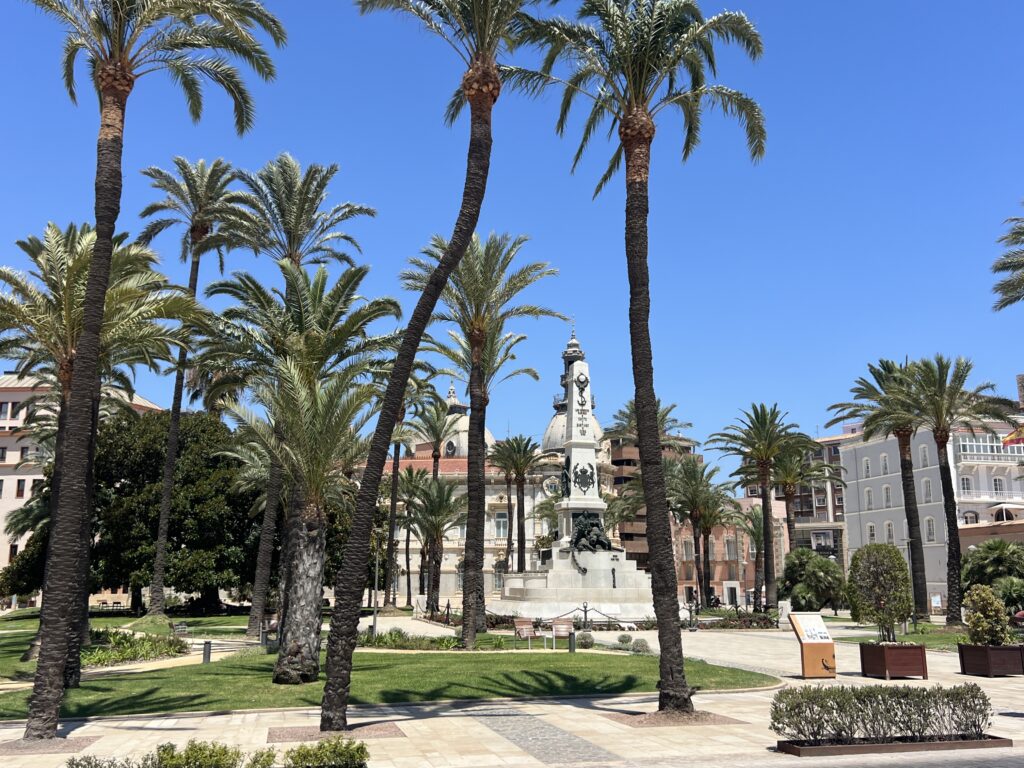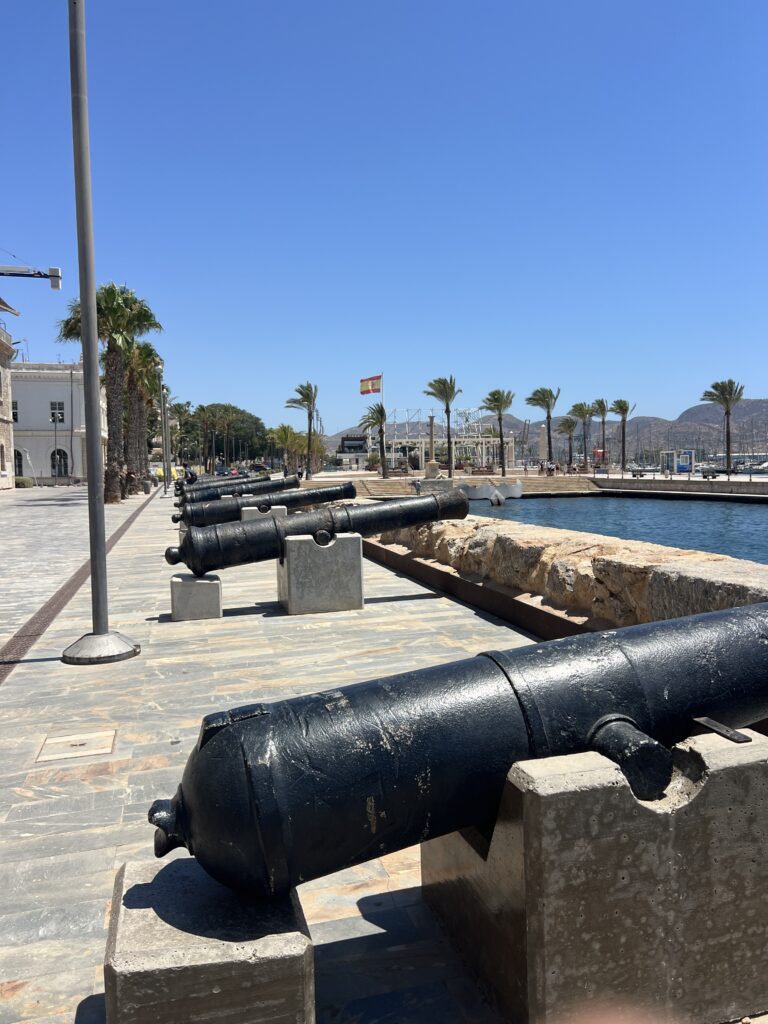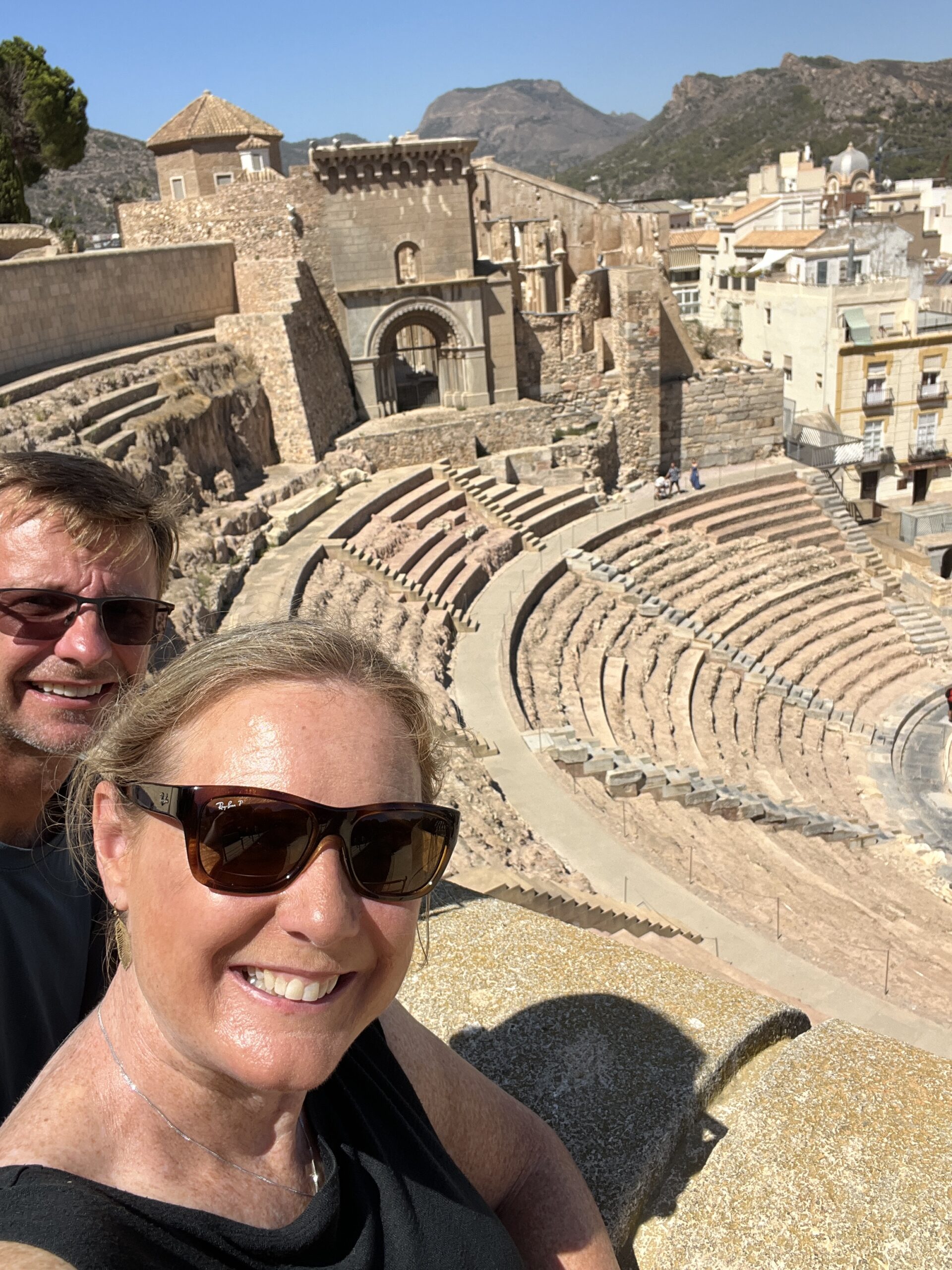Cartagena, Spain, was a fascinating city with its rich history and vibrant culture. Our adventure began at the Foro Romano Molinete (Roman Forum), an awe-inspiring site built in the 1st century BCE and used until the 5th century AD. Nestled in the city’s heart, it included the ancient Port’s Thermal Baths. Next, we stepped into the Roman Fortuna House, once home to a patrician of Cartagena. This visit was a fascinating peek into the daily life of the Roman upper-class, filled with mosaics and artifacts that told stories of grandeur and sophistication. Our journey continued with a ride on the Ascensor Panorámico to the top of Conception Hill. Here, the 13th-century Castillo de la Concepción, built by the Order of Calatrava, stood proudly. Its strategic location offered the most breathtaking vistas over Cartagena’s harbor and cityscape, including the old colosseum. The Teatro Romano came next, an ancient theater that seated 7,000 spectators between 5 and 1 BCE.
As night fell, we returned for the La Mar de Músicas Festival, which transforms Cartagena into a festive hub for 9 days, showcasing folk music from around the globe. That night, we were treated to some great music from Mexico, a perfect end to a day steeped in history and culture.
The following day, with many sights closed for Monday, we took a 5.2 km (3.2 miles) walk to Espacio Mediterráneo, on a quest for paddle boards for our upcoming Balearic Islands adventure. Though our shopping venture was unsuccessful due to limited stock, we ordered online and are keeping our fingers crossed for timely delivery to Alicante. The mall itself was a surprising mirror image of those in the USA or Australia, a reminder of the universal nature of modern life.
We ended our day back on the boat with seasoned travelers Joyce & Jeremy, who have been sailing for 35 years. Their tales, coupled with wine and cheese, made for an enjoyable and inspiring evening.



throughout the city

at the Foro Romano

Foro Romano Molinete

Roman Fortuna House


Castillo de la Concepción

calling for each other up at
Castillo de la Concepción
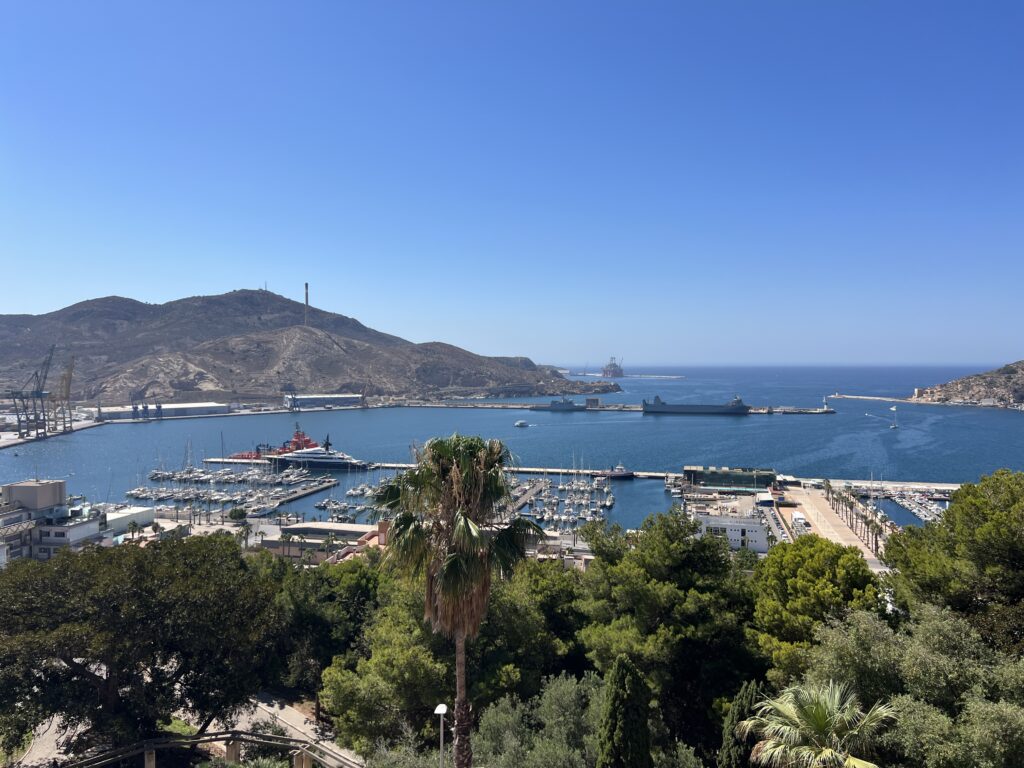
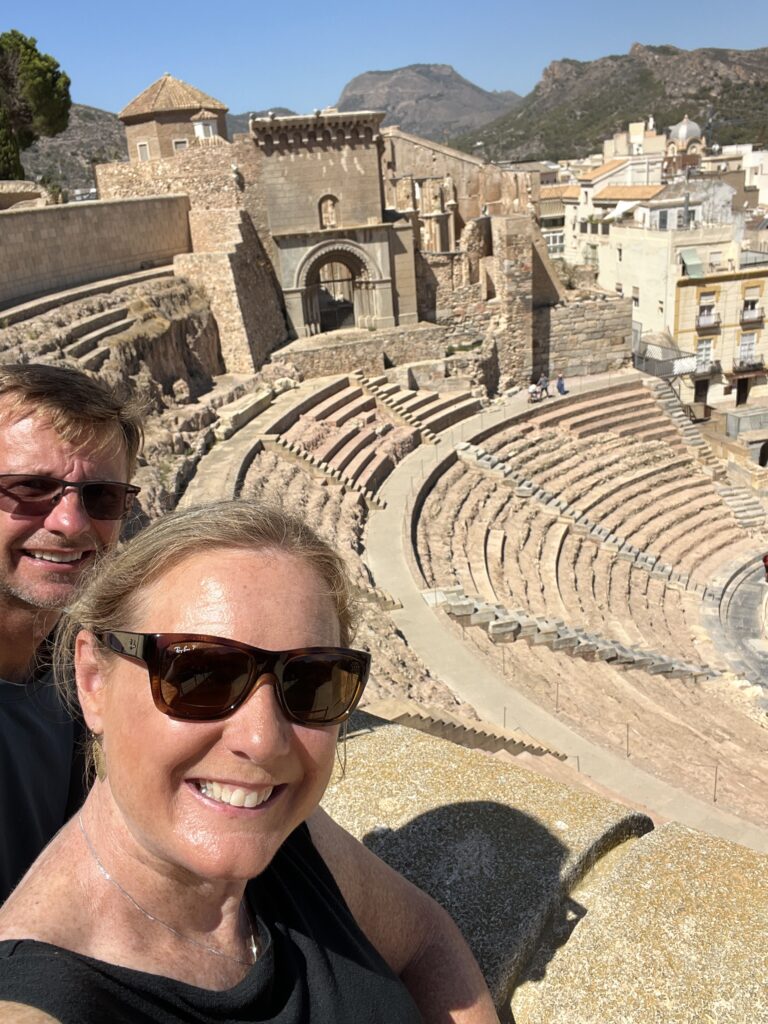

Roman theatre, nestled right
in the middle of the city

